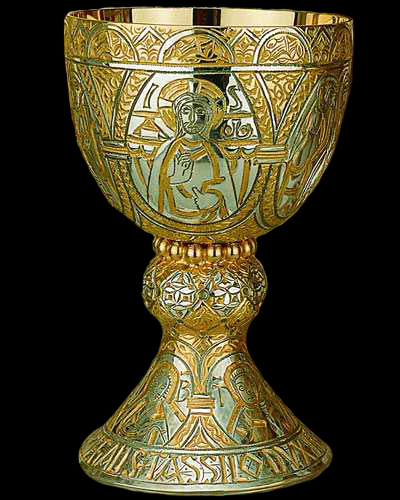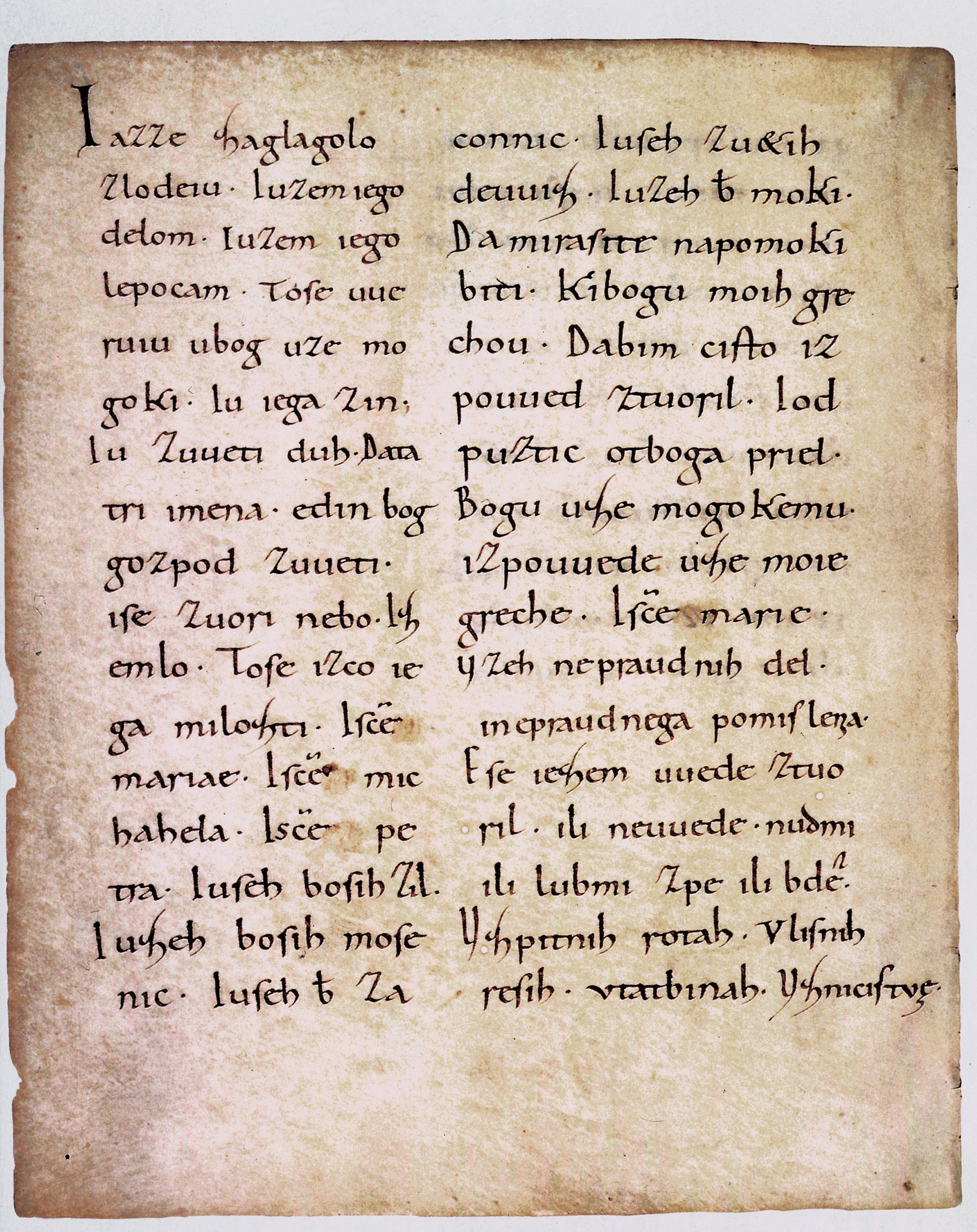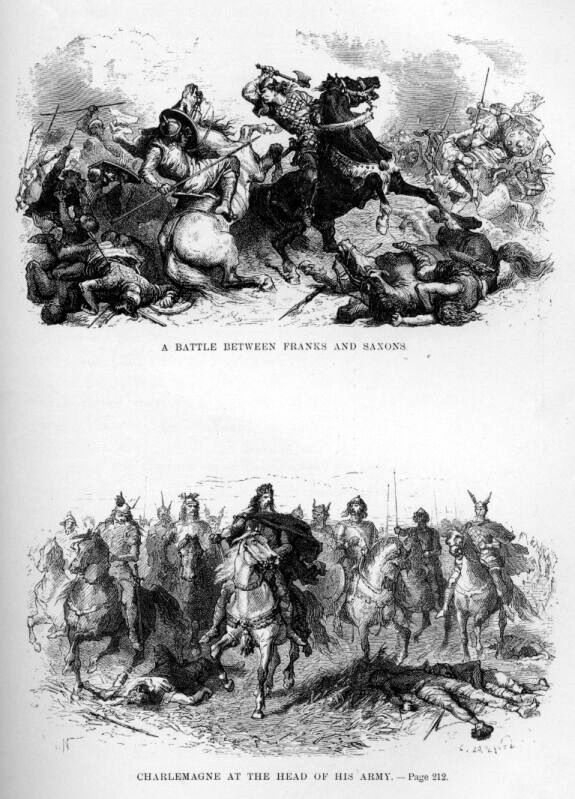|
Creontius
Creontius, sometimes Germanized Crantz ( 8th century), was a Bavarian official and historian. He served as the '' referendarius'' of Duke Tassilo III (), a position variously translated as chief counsellor, secretary or chancellor. He wrote a now lost chronicle in Latin that is partially preserved by Johannes Aventinus (1477–1534), who inserted passages from it into his ''Annales ducum Boiariae'' and also translated some into German for his ''Bairische Chronik''. These passages were "long considered spurious but renow accepted as authentic". Nonetheless, Aventinus occasionally amended the works he copied to give them a false precision, so his version of Creontius' text must be approached critically. It is still a valuable source because it offers a unique Bavarian perspective on the reign of Tassilo. Creontius is a contemporary and independent source. He has a pro-Bavarian bias and, on account of Tassilo's marriage to Liutperga, daughter of the Lombard king Desiderius, a pro-L ... [...More Info...] [...Related Items...] OR: [Wikipedia] [Google] [Baidu] |
Tassilo III
Tassilo III ( 741 – c. 796) was the duke of Bavaria from 748 to 788, the last of the house of the Agilolfings. The Son of Duke Odilo of Bavaria and Hitrud, the Daughter of Charles Martell. Tassilo, then still a child, began his rule as a Frankish ward under the tutelage of his uncle, the Carolingian Mayor of the Palace Pepin the Short (later king) after Tassilo's father, Duke Odilo of Bavaria, had died in 748 and Pepin's half-brother Grifo had tried to seize the duchy for himself. Pepin removed Grifo and installed the young Tassilo as duke, but under Frankish overlordship in 749. Then, in 757, according to the ''Royal Frankish Annals'', Tassilo became Pepin's vassal and the lord for his lands at an assembly held at Compiegne. There, he is reported to have sworn numerous oaths to Pepin and, according to reports that may have been written much later, promised fealty to him and his sons, Charles and Carloman. However, the highly legalistic account is quite out of character for t ... [...More Info...] [...Related Items...] OR: [Wikipedia] [Google] [Baidu] |
Johannes Aventinus
Johann Georg Turmair (or Thurmayr) (4 July 1477 – 9 January 1534), known by the pen name Johannes Aventinus (Latin for "John of Abensberg") or Aventin, was a Bavarian Renaissance humanist historian and philologist. He authored the 1523 ''Annals of Bavaria'', a valuable record of the early history of Germany.James Wood, ed.''The Nuttall Encyclopædia'' 1907; a modern biography in English is G. Strauss, ''Historian in an age of crisis: the life and work of Johannes Aventinus, 1477-1534'', 1963. Tutor Having studied at Ingolstadt, Vienna, Cracow and Paris, he returned to Ingolstadt in 1507 and in 1509 was appointed tutor to Louis and Ernest, the two younger brothers of William IV, Duke of Bavaria, all three the sons of Albert the Wise, the late duke of Bavaria. Aventinus retained this position until 1517, wrote a Latin grammar (''Rudimenta grammaticae latinae''; 1512) and other manuals for the use of his pupils, and in 1515 travelled in Italy with Ernest. In his zeal fo ... [...More Info...] [...Related Items...] OR: [Wikipedia] [Google] [Baidu] |
Baiuvarii
The Baiuvarii or Bavarians (german: Bajuwaren) were a Germanic people. The Baiuvarii had settled modern-day Bavaria (which is named after them), Austria, and South Tyrol by the 6th century AD, and are considered the ancestors of modern-day Bavarians and Austrians. The Baiuvarii spoke the early Bavarian language. Name The name of the Baiuvarii is also spelled ''Baiuvari''. It probably means "men from Bohemia". The placename Bohemia is believed to be connected to that of the Boii, a Celtic people who left the region before the Roman era and were replaced by Germanic peoples. The Baiuvarii gave their name to the region of Bavaria. The name is first attested in Latin sources in the 6th century AD. In the ''Getica'' (551), Jordanes writes that a group of Suebes near the Danube were neighboured on the east by the ''Baibari''. In a poem about a pilgrimage to Augsburg in 565, Venantius Fortunatus writes that the Baiovarius lived in area around the river Lech called Baiuaria. Language ... [...More Info...] [...Related Items...] OR: [Wikipedia] [Google] [Baidu] |
Carantanians
Carantanians ( la, Quarantani, sl, Karantanci) were a Slavic people of the Early Middle Ages (Latin: , or "Slavs called Caranthanians"), living in the principality of Carantania, later known as Carinthia, which covered present-day southern Austria and parts of Slovenia. They are considered ancestors of modern Slovenes, particularly Carinthian Slovenes. In the high Middle Ages, the term Carantanians and Carinthians were used interchangibly and denoted both the inhabitants of the bilingual Slavic-German Duchy of Carinthia, as well as South Slavs living within the borders of the Holy Roman Empire (that is, the ancestors of present-day Slovenes and Istrian Croats). Historical background After the disintegration of Samo's realm, Alpine Slavs established the Principality of Carantania in the Eastern Alps, which was independent from around 660 to around 745, when it fell under the Bavarian zone of influence and was later incorporated in the Frankish Empire. The formation of the ... [...More Info...] [...Related Items...] OR: [Wikipedia] [Google] [Baidu] |
People Of Medieval Bavaria
A person ( : people) is a being that has certain capacities or attributes such as reason, morality, consciousness or self-consciousness, and being a part of a culturally established form of social relations such as kinship, ownership of property, or legal responsibility. The defining features of personhood and, consequently, what makes a person count as a person, differ widely among cultures and contexts. In addition to the question of personhood, of what makes a being count as a person to begin with, there are further questions about personal identity and self: both about what makes any particular person that particular person instead of another, and about what makes a person at one time the same person as they were or will be at another time despite any intervening changes. The plural form "people" is often used to refer to an entire nation or ethnic group (as in "a people"), and this was the original meaning of the word; it subsequently acquired its use as a plural form of pe ... [...More Info...] [...Related Items...] OR: [Wikipedia] [Google] [Baidu] |
Liber Pontificalis
The ''Liber Pontificalis'' (Latin for 'pontifical book' or ''Book of the Popes'') is a book of biographies of popes from Saint Peter until the 15th century. The original publication of the ''Liber Pontificalis'' stopped with Pope Adrian II (867–872) or Pope Stephen V (885–891), but it was later supplemented in a different style until Pope Eugene IV (1431–1447) and then Pope Pius II (1458–1464). Although quoted virtually uncritically from the 8th to 18th centuries, the ''Liber Pontificalis'' has undergone intense modern scholarly scrutiny. The work of the French priest Louis Duchesne (who compiled the major scholarly edition), and of others has highlighted some of the underlying redactional motivations of different sections, though such interests are so disparate and varied as to render improbable one popularizer's claim that it is an "unofficial instrument of pontifical propaganda." The title ''Liber Pontificalis'' goes back to the 12th century, although it only became c ... [...More Info...] [...Related Items...] OR: [Wikipedia] [Google] [Baidu] |
Pannonian Avars
The Pannonian Avars () were an alliance of several groups of Eurasian nomads of various origins. The peoples were also known as the Obri in chronicles of Rus, the Abaroi or Varchonitai ( el, Βαρχονίτες, Varchonítes), or Pseudo-Avars in Byzantine sources, and the Apar ( otk, 𐰯𐰺) to the Göktürks (). They established the Avar Khaganate, which spanned the Pannonian Basin and considerable areas of Central and Eastern Europe from the late 6th to the early 9th century. The name Pannonian Avars (after the area in which they settled) is used to distinguish them from the Avars of the Caucasus, a separate people with whom the Pannonian Avars might or might not have had links. Although the name ''Avar'' first appeared in the mid-5th century, the Pannonian Avars entered the historical scene in the mid-6th century, on the Pontic–Caspian steppe as a people who wished to escape the rule of the Göktürks. They are probably best known for their invasions and destruction in ... [...More Info...] [...Related Items...] OR: [Wikipedia] [Google] [Baidu] |
Widukind
Widukind, also known as Wittekind, was a leader of the Saxons and the chief opponent of the Frankish king Charlemagne during the Saxon Wars from 777 to 785. Charlemagne ultimately prevailed, organized Saxony as a Frankish province, massacred thousands of Saxon nobles, and ordered conversions of the pagan Saxons to Christianity. In later times, Widukind became a symbol of Saxon independence and a figure of legend. Life Very little is known about Widukind's life. His name literally translates as "child of the forest". In the chronicles he is accompanied by Abbi who may have been a close relative. However, it is uncertain how they were related because all sources about him stem from his enemies, the Franks, who painted a negative picture representing him as an "insurgent" and a "traitor". While Widukind was considered the leader of the Saxon resistance by the Franks, his exact role in the military campaigns is unknown. According to the ''Royal Frankish Annals'', the Franks campaig ... [...More Info...] [...Related Items...] OR: [Wikipedia] [Google] [Baidu] |
Saxon Wars
The Saxon Wars were the campaigns and insurrections of the thirty-three years from 772, when Charlemagne first entered Saxony with the intent to conquer, to 804, when the last rebellion of tribesmen was defeated. In all, 18 campaigns were fought, primarily in what is now northern Germany. They resulted in the incorporation of Saxony into the Frankish realm and their forcible conversion from Germanic paganism to Christianity. The Saxons were divided into four subgroups in four regions. Nearest to the ancient Frankish kingdom of Austrasia was Westphalia, and farthest was Eastphalia. In between the two kingdoms was that of Engria (or Engern), and north of the three, at the base of the Jutland peninsula, was Nordalbingia. Despite repeated setbacks, the Saxons resisted steadfastly, returning to raid Charlemagne's domains as soon as he turned his attention elsewhere. Their main leader, Widukind, was a resilient and resourceful opponent, but eventually was defeated and baptized (in 785 ... [...More Info...] [...Related Items...] OR: [Wikipedia] [Google] [Baidu] |
Adige
The Adige (; german: Etsch ; vec, Àdexe ; rm, Adisch ; lld, Adesc; la, Athesis; grc, Ἄθεσις, Áthesis, or , ''Átagis'') is the second-longest river in Italy, after the Po. It rises near the Reschen Pass in the Vinschgau in the province of South Tyrol, near the Italian border with Austria and Switzerland, and flows through most of northeastern Italy to the Adriatic Sea. The river's name is Celtic in origin, from the Proto-Celtic cel-x-proto, *yt-ese, label=none, "the water", cognate with the River Tees in England (anciently ''Athesis'', ''Teesa''). Description The river source is near the Reschen Pass () close to the borders with Austria and Switzerland above the Inn valley. It flows through the artificial alpine Lake Reschen. The lake is known for the church tower that marks the site of the former village of Alt Graun ("Old Graun"); it was evacuated and flooded in 1953 after the dam was finished. Near Glurns, the Rom river joins from the Swiss Val Müstair. ... [...More Info...] [...Related Items...] OR: [Wikipedia] [Google] [Baidu] |
Bolzano
Bolzano ( or ; german: Bozen, (formerly ); bar, Bozn; lld, Balsan or ) is the capital city of the province of South Tyrol in northern Italy. With a population of 108,245, Bolzano is also by far the largest city in South Tyrol and the third largest in historical Tyrol. The greater metro area has about 250,000 inhabitants and is one of the urban centers within the Alps. Bolzano is the seat of the Free University of Bozen-Bolzano, where lectures and seminars are held in English, German, and Italian. The city is also home to the Italian Army's Alpini High Command (COMALP) and some of its combat and support units. In the 2020 version of the annual ranking of quality of life in Italian cities, Bolzano was ranked joint first for quality of life alongside Bologna. Along with other Alpine towns in South Tyrol, Bolzano engages in the Alpine Town of the Year Association for the implementation of the Alpine Convention. The Convention aims to promote and achieve sustainable developme ... [...More Info...] [...Related Items...] OR: [Wikipedia] [Google] [Baidu] |
Worms, Germany
Worms () is a city in Rhineland-Palatinate, Germany, situated on the Upper Rhine about south-southwest of Frankfurt am Main. It had about 82,000 inhabitants . A pre-Roman foundation, Worms is one of the oldest cities in northern Europe. It was the capital of the Kingdom of the Burgundians in the early fifth century, hence is the scene of the medieval legends referring to this period, notably the first part of the ''Nibelungenlied''. Worms has been a Roman Catholic bishopric since at least 614, and was an important palatinate of Charlemagne. Worms Cathedral is one of the imperial cathedrals and among the finest examples of Romanesque architecture in Germany. Worms prospered in the High Middle Ages as an imperial free city. Among more than a hundred imperial diets held at Worms, the Diet of 1521 (commonly known as ''the'' Diet of Worms) ended with the Edict of Worms, in which Martin Luther was declared a heretic. Worms is also one of the historical ShUM-cities as a cultural ... [...More Info...] [...Related Items...] OR: [Wikipedia] [Google] [Baidu] |


_1938.jpg)




